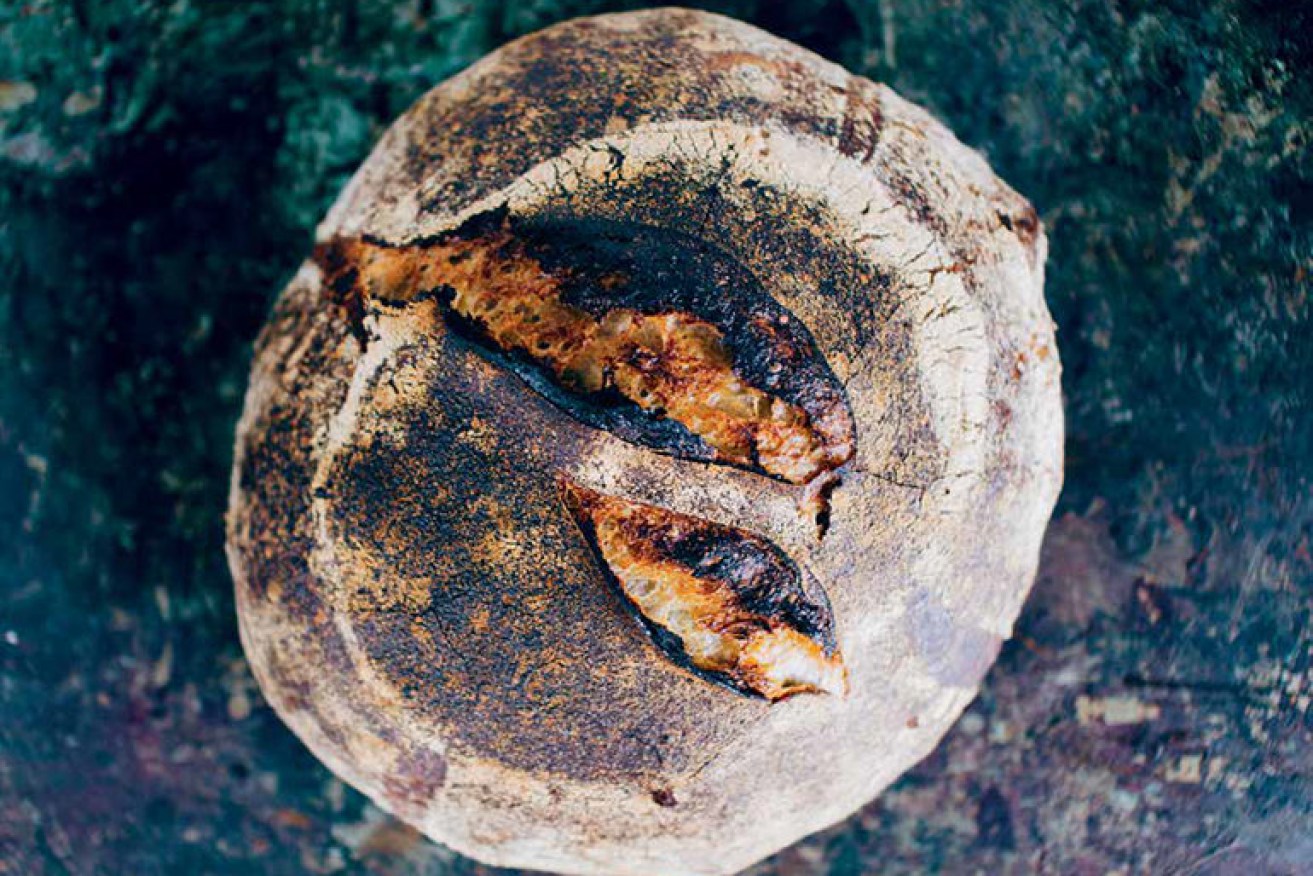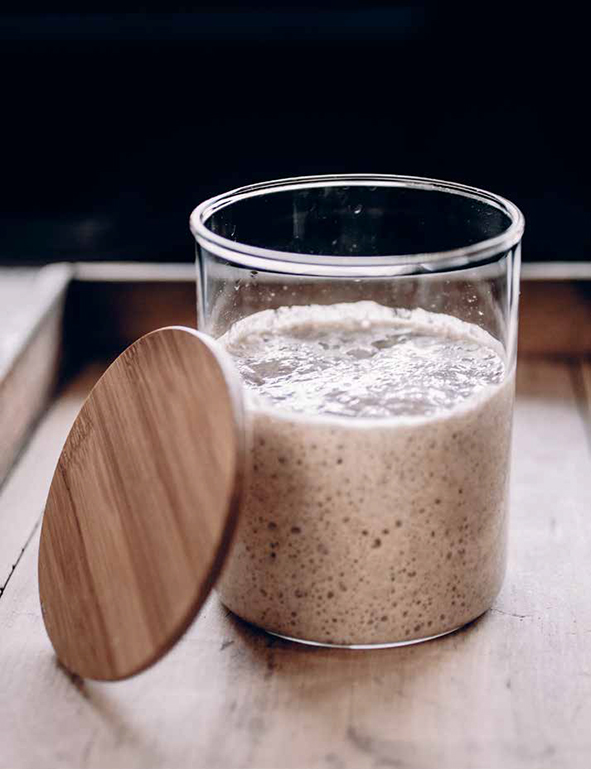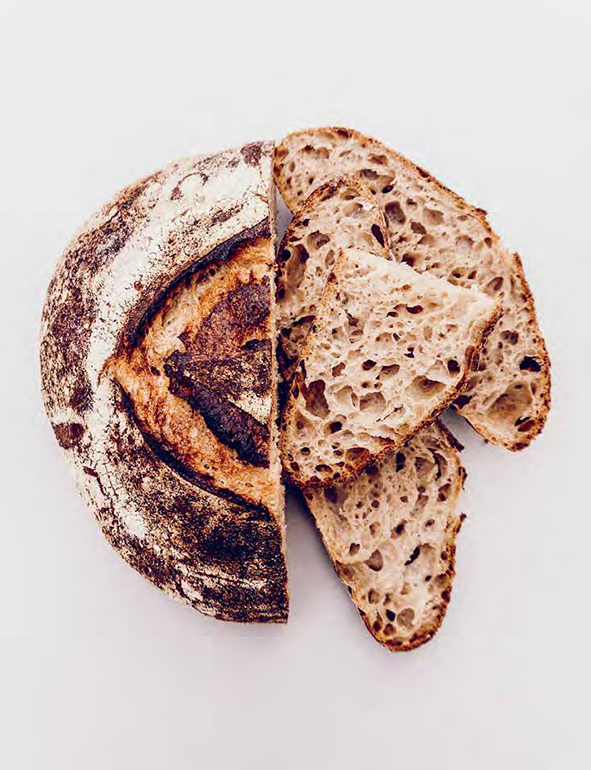The best bread? Three ingredients and time
Using just three ingredients – flour, water and salt – you can make the best bread you’ve ever tasted. You might also rediscover some inner calm along the way.


An image from "Sourdough" by Casper Andre Lugg and Martin Ivar Hveem. Photographer: Simen Grytøyr
The original bread – sourdough – is making a comeback in home kitchens across South Australia and the world. It’s simple, but time-consuming.
The satisfaction comes from the micro-biological magic of putting together just three of the most basic ingredients – flour, water and salt – and eventually producing something wonderful. And a proper loaf of sourdough is truly wonderful: airy, chewy, mouth-watering.
I started my experimentation after watching the bread episode of Cooked, food writer Michael Pollan’s Netflix series of the book of the same name.
His evocation of the way breadmaking takes a stolid raw ingredient – wheat flour – and infuses it with air, makes for intoxicating viewing (it’s also disturbing, when he shows how the fermentation of sourdough makes the end product so much healthier and more digestible than the Frankenstein fast-food that modern packaged bread has become).
So I found a “recipe” online for the “starter” – the beginning of all sourdough bread – and began. The starter, or “mother”, is simply a mixture of flour and water (although some people add small additions of fruit to speed up the microbial action).
The weather was cold and the action was slow: my mix took days to start bubbling, and then smelled strange – almost like nail polish remover. I forgot about it for a few days, until its aroma drew me back: it gave off the scent of bread. A warm, yeasty smell.
It seemed a little miraculous, and I had a glimpse of what it must have felt like for the original ancient discoverer of sourdough who had, perhaps, forgotten about a bowl of wheat porridge until the unseen world of yeasts and bacteria did their work.
There are many different methods for making your bread from here, but all involve mixing some of the starter with more flour and water to create a “leaven”. You’re basically “infecting” larger and larger mixes of flour with the living starter. Once the leaven has fermented for a sufficient amount of time, you add it to more flour and water. The best part of a day is spent on these final processes, but your intervention is intermittent – it involves more folding and shaping than kneading, which isn’t required.
I baked my first loaf in a cheap metal bread tin, but experienced hands will also use cast-iron dutch ovens, or specialty bread pans of various types.
To my surprise and delight, even that first loaf was a beautiful thing: the crust was a burnished, shiny umber with a caramel type flavour; underneath, the bread was airy, chewy, pleasantly sour.
A triumph.
But after every triumph, comes the possibility of a fall. Your starter needs care – regular “feeding”, which involves removing some of the volume and mixing in fresh flour and water. To slow it down, and reduce the regularity of feeding, you can put it in the fridge. If your life gets busy, and you fall out of the rhythm of making sourdough, you may forget about your starter. Which may develop mold or something similarly unpleasant (which may or may not have happened to me…).
Then you’ll need to either start again, or find a kind friend to provide you with a spoonful of theirs.

A healthily bubbling starter from “Sourdough” by Casper Andre Lugg and Martin Ivar Hveem Fjeld. Photographer: Simen Grytøyr
My friend Pip Williams, a fellow Adelaide Hills dweller whose book One Italian Summer is to be published soon by Affirm Press, has moved from a sourdough rookie to gun in the space of a couple of years.
She keeps a bubbling jar of starter on her counter, and bakes every week.
Her book, the true story of the year she and her family took off to work in the homes and farms of strangers across Italy, recounts her discovery of beautiful home-made sourdough rye bread.
She writes that she is so taken with the loaf, made by her host Ulrike in Tuscany, that she is offered some of the pasta madre – the mother dough – to take back to Australia with her.
“To me, this pasta madre is a part of her – part of this place and way of life,” Williams writes. “I interpret her gift as a vote of confidence, and suddenly I realise how much I’ve wanted a sign that I might have what it takes to live this good life.”
Her husband Shannon points out that a gooey jar of bubbling pasta madre might raise the ire of customs, so they dry it out, to reconstitute when they return to Australia. (Williams wraps the dried-out mixture in foil and puts in into the post… and you’ll have to read the book to find out what happens next.)
Back home, Williams set to creating her own starter and experimenting with sourdough baking – creating something uniquely her own.
And, to her, that’s part of the point of sourdough: it is literally an ecosystem that reflects locality. She believes that as the starter gets older, the flavour of the bread gets better.
Her loaves are now spectacular: storybook round beauties, with the traditional slashes on top baking into crispy peaks, the insides soft and full of flavour.
While she agrees that baking a loaf is time-consuming, she also believes the dough is much more forgiving than that of the baker’s yeast loaves she had once favoured.
“Sourdough doesn’t insist on anything,” she says. “It’s not like a whistling kettle or a complaining child – it’s a very calm thing. With yeast, if you’re not there when it needs you, it will fail.
“I can leave the dough for two days and it will still be fine.”
For her, it’s as much about slowing down as producing food.
“I need sourdough in my life because it doesn’t insist I watch the clock. It is patient and forgiving and it rewards the intermittent attention I give it. The hours it takes to prove are a gift.”
There are infinite variations that will change the flavour and texture of your sourdough, quite apart from the starter.
These factors include the kinds of flour, or mix of flours, that you use (as recounted in Willliams’ book, Ulrike’s magic loaf is made from 100 per cent rye flour with coriander), the amount of water and salt, the treatment you apply to your loaf as it proves, the baking receptacle you choose, the temperature and humidity of the oven, and so on. Like the best simple foods, there’s an underlying complexity to creating control which leads to repeated good results.

A cut loaf from “Sourdough” by Casper Andre Lugg and Martin Ivar Hveem Fjeld published by Hardie Grant Books. Photographer: Simen Grytøyr
A new book, Sourdough, by Norse bakers Casper Andre Lugg and Martin Iva Hveem Field, describes time as the fourth ingredient in a loaf of sourdough.
They say a good loaf of sourdough takes patience, forethought (both absolutely true in my experience) and love (probably), to create. As such, they say, its rise in popularity is indicative of a shift towards more mindful, considered way of thinking.
Their recipe for creating a starter is quite typical: simply some wholegrain rye flour and warm water, mixed together and set in a warm place.
“At first, the fermentation process goes slowly,” the authors write. “But as you follow the steps… the microorganisms will multiply, eventually forming a natural balance between yeast spores and lactic acid bacteria in your new starter. In just one week, your glass will be full of life and you’ll be ready to get started on your first baking session.”
Their process involves adding a little more flour and warm water each day and, on day four and day five, removing some of the bubbling mix to a second jar and “feeding” it with more flour and water.
Then, you’re ready to bake.
There are numerous options from here, so get yourself a book like Sourdough, or search for other bakers’ recipes on the internet – there’s no shortage of tips in cyberspace from obsessed home sourdough bakers. If you’re lucky, you’ll know a sourdough baker who can help guide you on your day.
But remember that making your own discoveries, taking your own time, is part of the reward – quite apart from that first slice of burnished, warm bread.
Sourdough by Casper Andre Lugg and Martin Ivar Hveem Fjeld, published by Hardie Grant Books, is available in bookshops nationally.
One Italian Summer by Pip Williams is published by Affirm Press. It will be released in April.




